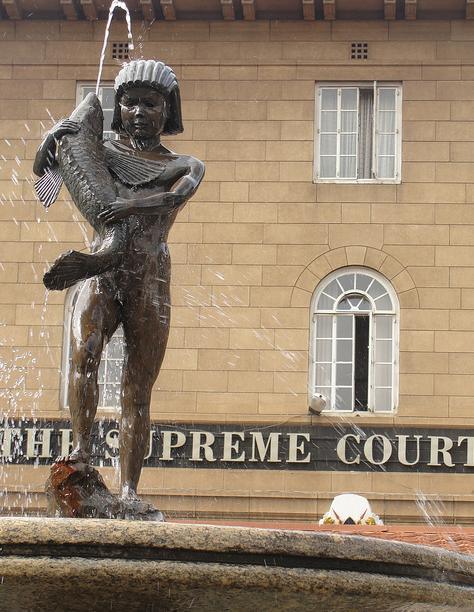February 2015: Intellectual Property Month in Review
- Victor Nzomo |
- March 2, 2015 |
- CIPIT Insights,
- Intellectual Property

This past month, most of the intellectual property (IP) law related developments have been in the area of trade marks. The most significant development was a media report from Rwanda indicating that the Commercial Division of the High Court declined to annul the registration of ‘AZANIA’, a trade mark whose ownership was in dispute between two rival Tanzanian companies seeking to make in-roads into the Rwandan market. In 2013, Bakhresa Group went to the Office of the Registrar General at Rwanda Development Board (RDB) and obtained ownership of Azania trademark.
On discovering this trade mark registration, Bakhresa’s rival, Mikoani claims to have immediately written a letter of protest to RDB which led to mediation efforts which failed because it is claimed that Bakresa lacked interest. Therefore Mikoani was forced to approach the courts for intervention. In the case before the court, Mikoani argued that Bakhresa’s intention was to guard its Azam flour products against competition that would be posed by Mikoani’s Azania flour products in the Rwandan market. Therefore by obtaining a trade mark registration for Azania, Bakhresa had effectively blocked Mikoani from extending their home rivalry (in the Tanzanian market) to the Rwandan market. However, the court reportedly quashed Mikoani’s arguments on grounds that not enough evidence was provided to prove that Bakhresa’s actions were done in bad faith. The court is also said to have concurred with Bakhresa that at the time of registration, the Azania trademark had no owner in Rwanda, therefore the blame lies squarely on Mikoani for not moving fast to protect its own brand. This blogger has discussed this case and made some comments on this curious decision by the court in this case here.
Meanwhile in Uganda, the court awarded a whooping 400 Million Shillings for contempt of court in a passing-off/trade mark suit relating to alleged infringement by one company, Comfoam of cover designs on mattresses registered under the trade mark “ROYALFOAM” by another company, Megha. In arriving at its finding that Comfoam were in contempt of court orders, the court observed that the mattresses covers by Comfoam were very similar to those of Megha in design and color and the only difference is that Comfoam’s covers bore its own company name. Find more on this case here.
Closer to home, two recent trade mark decisions by the High Court were discussed this past month. This first case involves the popular “Galaxy” brand of hair products and second case involves “Omega Dustless Chalk”.
In the Galaxy case, Solpia Kenya seeking interim injunctive orders to restrain Style Industries and Sana Industries from “offering for sale, stocking, distributing, displaying, producing, manufacturing, packaging, advertising, marketing and/or selling braids, wigs, weaves and artificial hair pieces bearing Solpia Kenya’s trade mark “GALAXY” or in any way infringing and/or passing off Solpia Kenya’s trade mark “GALAXY””. While it was not disputed that Solpia Kenya is the proprietor of the Trade Mark “GALAXY” Trade Mark No.75929 registered in Class 26, Style and Sana claimed that they and their predecessors have been using the trade mark GALAXY; been manufacturing, advertising and selling cosmetics products including wigs, weaves, hair additions and hair extensions since 2007, which was way before Solpia Kenya registered the trademark and entered the beauty field of business. The High Court found in favour of Style and Sana Industries and dismissed Solpia’s application for interim injunctive orders. Find more on this case here.
In the Omega Dustless Chalk case, two companies namely Omega Chalk Industries (1993) Limited and Chemical and School Supplies Limited (“the applicants”) sought orders orders of prohibition, certiorari and mandamus against the Anti-Counterfeit Agency (ACA) with respect to seizures made of goods bearing the alleged infringing mark ‘Omega Dustless Chalk’ registered by Omega School Boards and Accessories Limited (“the interested party”). The court dismissed the application in its entirety rightly noting that section 25(3) of the Anti-Counterfeit Act provides an “alternative remedy which is more convenient and appropriate for the resolution of the issues” raised by the applicants relating to the alleged wrongfulness of the seizure by ACA. Find more on this case here.
Still within the context of trade marks, this blogger discussed the impact of the introduction of pictorial health warnings on tobacco trade marks in Kenya. Find more on this topic here. This blogger argues that the new Regulations introducing these graphic warnings will have the drastic impact of removing the last space for tobacco advertising (i.e. the packaging), reducing the incidence of smoking and thus diminishing the industry’s power to recruit new smokers.
Finally, this blogger examines the reluctance of African states, including Kenya, to sign the Budapest Treaty on the International Recognition of the Deposit of Microorganisms for the Purposes of Patent Procedure. At present there are only three African countries that have signed this WIPO-administered treaty, namely Tunisia, Morocco and South Africa. This perceived reluctance may attributed to a lack of critical mass among inventors and innovators in Africa. Therefore this blogger suggests that as the innovation space continues to grow around the continent, there ought to be greater demand and push from local inventors to join the Budapest Treaty so to enjoy it’s benefits. Find more on this topic here.

iThinker